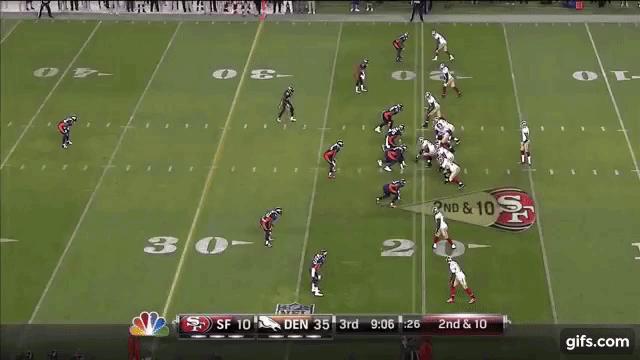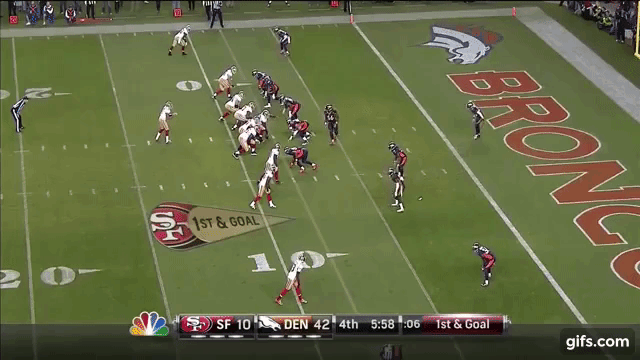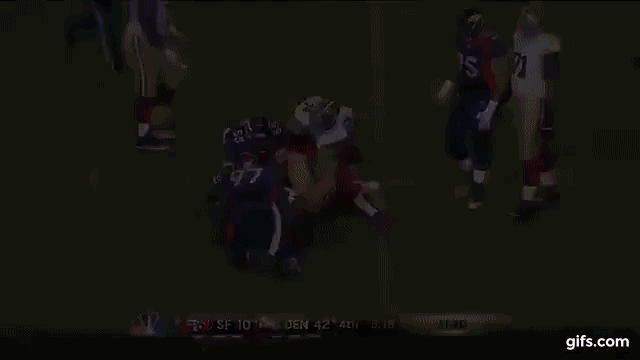How To Teach Defensive Pass Rush Moves
Defensive Pass Rush Moves
Pass rush moves from the defensive lineman are the quickest because they start a yard away from the Quarterback. Having an effective pass rush gets in the head of the offensive lineman and the Quarterback.
Rushing the passer is an art. Once you’ve understood how to line up and learned the gaps and techniques, mastering hand placement and body leverage will help you become a complete pass rusher. Pass rush moves, along with the scheme, play a big part in a defense’s overall ability to get after the Quarterback.
Having a dominant pass rush is essential for a few reasons.
- It puts pressure on the Offensive Tackle
- It puts pressure on the Quarterback
- It makes the Offensive Coordinator question his play calls
We have a complete list of courses and interviews with professional pass rushers if you’re looking for a more technical breakdown of pass rush moves.
Adding Pressure On The Offensive Tackle
The first and most apparent reason is adding pressure to the offensive tackle, especially the left tackle (or the blindside tackle). Pass rush moves can help with mentally and physically applying pressure.
Playing tackle (especially in the NFL) is a challenging position. Not only do they have to worry about doing their job correctly – they also need to focus on blitzes, stunts, and any checks that happen at the line of scrimmage.
Couple this with a good pass rusher, and it can be an offensive tackle’s worst nightmare.
Pressure On The Quarterback
Quarterbacks tend to get into trouble when they hit the top of their drop, and their eyes drop from the receivers to the defensive rush.
This is why closing the pocket from the edge is so important. Once the Quarterback goes into “panic” mode, it’s rare to get him back into his rhythm.
One hit from the blindside can not only fatigue a quarterback, but it can also make him shorten his timing and throw before he hits the top of his drop.
Guys like Von Miller and Khalil Mack have been making these pass rush moves for years and have a tremendous amount of success.
Pressure On The Offensive Coordinator
A good edge rusher forces offensive coordinators to call plays they typically don’t want to. In order to deal with good edge rushers, you can run away from them, pass away from them or read them.
Young players should model their game after certain NFL players. One example is Von Miller. Von brings an extraordinary combination of strength and speed to his arsenal and has mastered the pass rush moves game.
As Hall of Fame Tackle Will Roaf mentioned in his podcast, he hated facing passing rushers that could win with power. He much preferred the speed rushers.
Roaf states that the power rushers always had him on his heels. To defend against the bull-rush, an offensive tackle must drop his hips and lean forward.
If caught leaning too much, a simple push-pull and rip could catch the tackle out of position. These pass rush moves make even the great tackles nervous.
Pass Rush Moves
This post will study the brilliance of defensive end all-stars Von Miller, Demarcus Ware, and Aaron Lynch from their game in 2014.
All 3 of these defensive pass rushers made it an absolute nightmare for their opposing quarterbacks.
We’ll be breaking down the YouTube video below, as well as walking through each pass rush move and why it was used against the leverage of the offensive tackle.
https://www.youtube.com/embed/QJiWotJXvf8?feature=oembed
Speed Rip

Win with Speed.
This is one of the most common moves used among young defensive ends. The goal is simple, get around the offensive tackle and close the pocket.
Exploding off the edge is an essential part of this move. Gaining up-field leverage with speed, forcing the tackle to kick back, automatically gets him out of position.
The speed, coupled with a low rip, forces the tackle’s hand position to be out of place, which allows the edge rush to leverage himself upfield.
Speed Chop
Winning again with speed but using a “chop” as the defensive end approaches the tackle.
Attacking the outside hand and outside foot is the goal here. The “chop” is when a defensive end chops the hand down toward the ground so he can get around the tackle.
The chop helps disengage the tackle’s outside hand to gain leverage around the edge.
This rush is similar to the speed rush, but we’re going to chop the outside hand and work tight to the hip this time.
The key points are chopping and bending to the football and getting the hips square to the Quarterback.
Bull Rush
Our first power move! The Bullrush!
If you’ve been winning with speed, now it’s time for the bull rush. Here, Demarcus Ware does a great job pressing upfield to influence the tackle to kickback.
When the tackle is off-balanced, Ware sticks his outside foot in the ground and uses that momentum to get under the tackle and push him back.
It’s essential to get the tackle kicking back or getting his shoulders to square to you.
The momentum of the tackle, including feet, hips, and upper body, is leaning back; there’s no possible way he can absorb the power of the bull rush without kicking his feet back – which then the defensive end can run around him.
Bull rushing is not just for edge rushers who are strong. Speed rushers can bull rush as well; they need to be crafty with how they set the tackle up.
Often getting a vertical set, then coming straight down the middle of the tackle can get them on their toes.
Push Pull Swim

Few hand placement & footwork techniques to note for this pass rush move to be successful.
- The edge rush must maintain speed up field – this will get the defender leaning backward.
- Start to bullrush, so the tackle has to place his back foot in the ground and counter-act the leverage. This will put the tackle leaning forward.
- Once the edge rush feels the counter force from the tackle, pull his jersey/shoulder pads toward you and swim over the top.
Notice the tackle’s weight changes from back to front at each point of contact.
Again with pressing and influencing the tackle to get up-field, when the tackle leans forward to absorb the bull rush, we want to use leverage against him.
It doesn’t matter how big the offensive lineman is; it’s all about hand fighting and leverage.


